By Melissa Nase, Manager of Land Stewardship
Welcome to our new mobile Field Guides! We’ll regularly post guides about what’s blooming, what animals you can see, and other interesting things to observe in the woods, meadows, and streams. These posts are designed to be easy to read on a phone, meaning you can take this mobile field guide out with you as you walk, hike, and play. See other Field Guide posts here.
Tulip poplar (Liriodendron tulipfera)
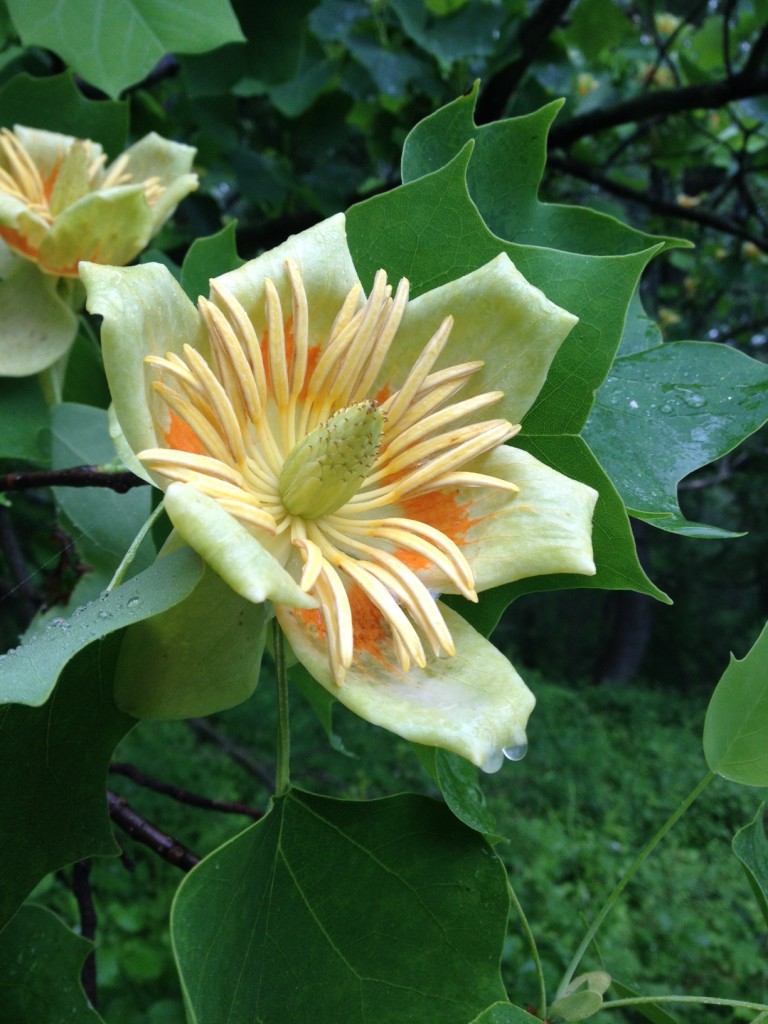
The most common tree you will see on the Schuylkill Center’s property, this tree has distinct yellow and orange flowers and leaves that look like cat ears. They grow quickly with very straight trunks, often the first to reclaim open spaces in our forest. Serving an important ecological purpose as well, this tree supports 19 native Lepidoptera species. You may see yellow petals with an orange stripe this time of year – a sure sign that there are tulip poplars overhead.
Northern catalpa (Catalpa speciosa)
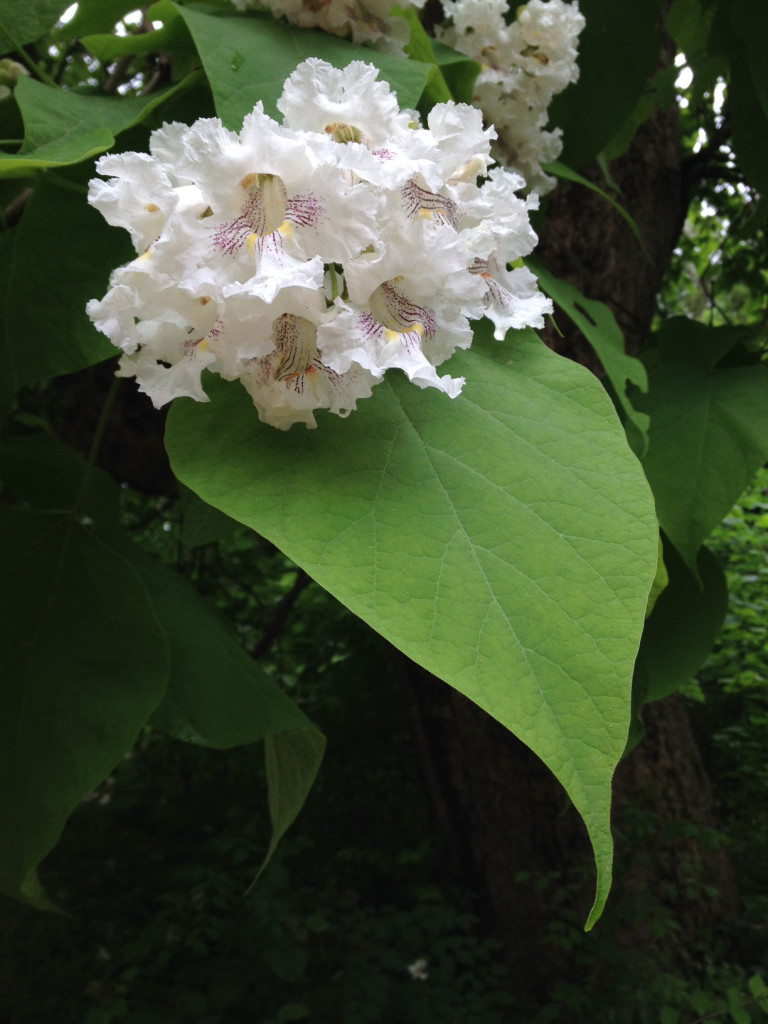
These beautiful, showy flowers are from a catalpa tree – a late spring showstopper! With elongated heart-shaped leaves, this tree could easily be confused with the invasive, nonnative empress tree (Paulownia tomentosa) that also can be seen at the center. Later in the year, the catalpa gets long string bean-like seed pods that hang from branches.
Virginia spiderwort (Tradescantia virginiana)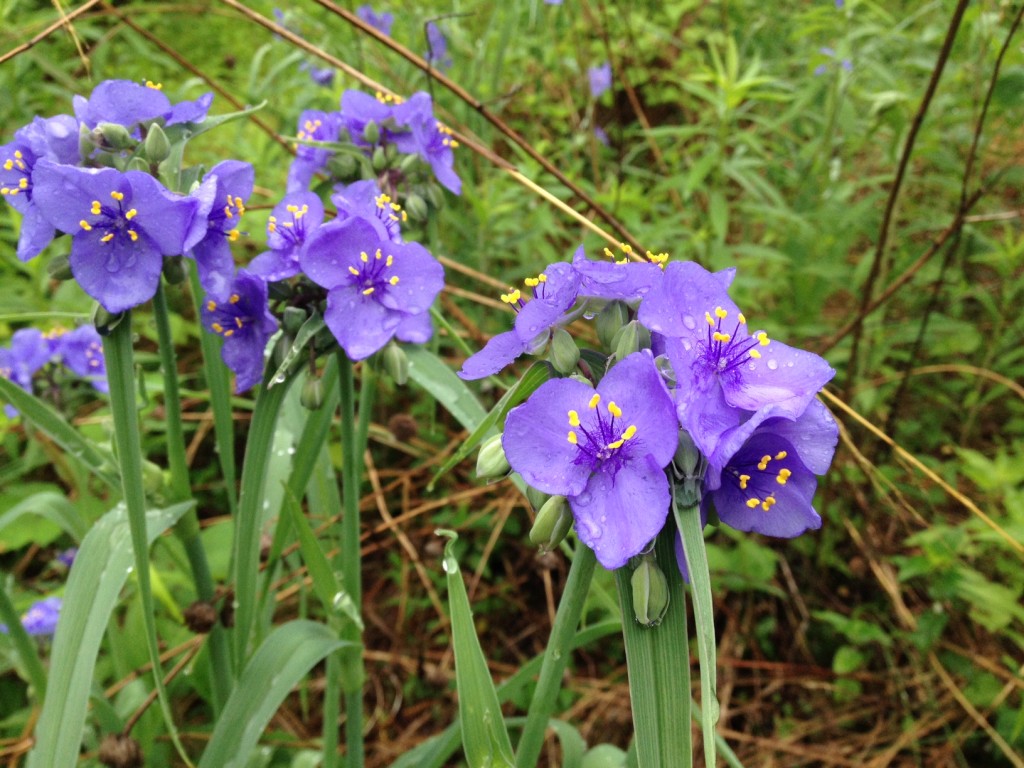
Named for its angular leaf arrangement, native spiderwort can be seen in several meadows here. This plant opens its flowers in the morning and closes them later in the afternoon, with the individual blooms only lasting one day. They self-seed well and add great color to the landscape.
Daisy fleabane (Erigeron annuus)
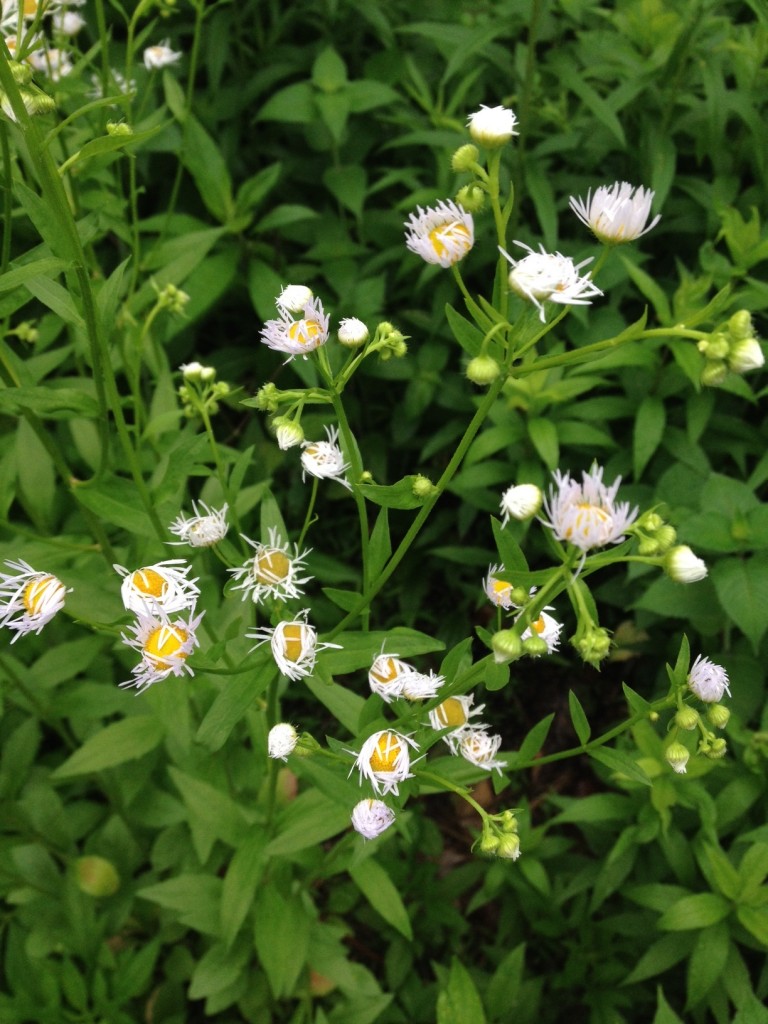
These rainswept fleabane were spotted in our front garden. Typically located in meadows, woodland edges, or disturbed roadside sites, the dried flowers of this annual plant were believed to rid a home of fleas. These flowers bloom throughout the season, attracting predatory insects to combat insect pests.
Dogbane, Indian Hemp (Apocynum cannabinum)
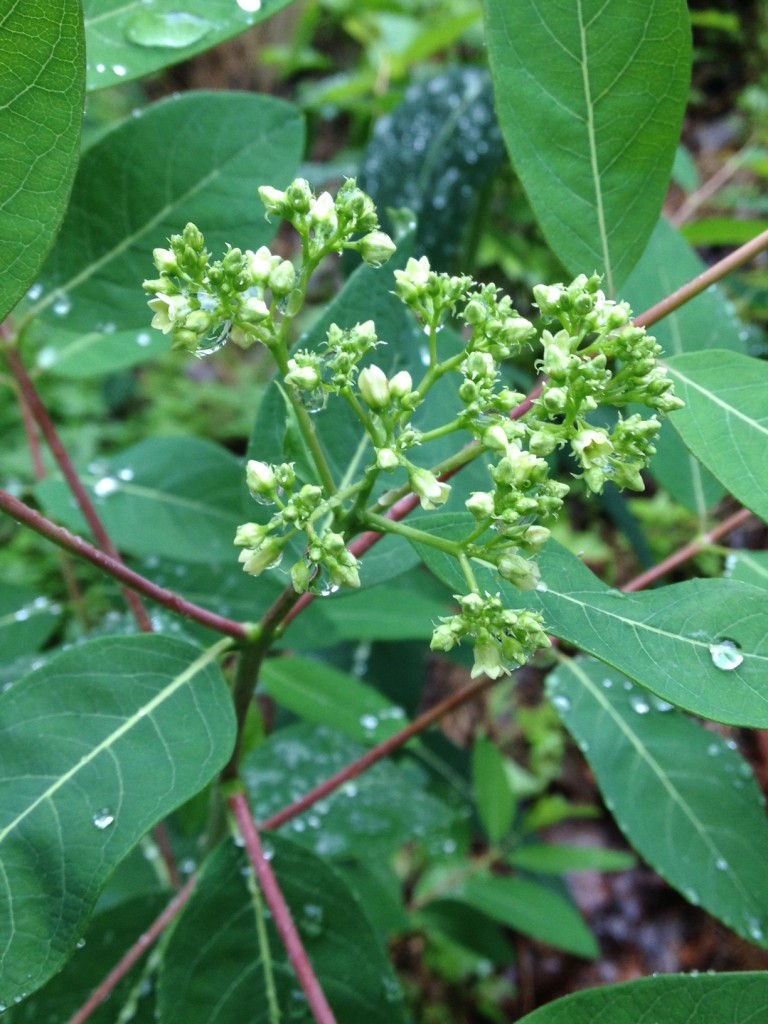
In the same family at milkweed, this plant has a very high value to pollinators despite its small, inconspicuous greenish-yellow flowers. It may be easier to spot this plant by its reddish stem, and thin, long seed pods later in the year that release seeds with fluffy white pappus attached. While it is a food source for adult butterflies, specifically monarchs, all parts are poisonous to herbivores. As a result, it grows well here despite our large white-tail deer population.

Very nice post, good job:-)! Best regards for you!